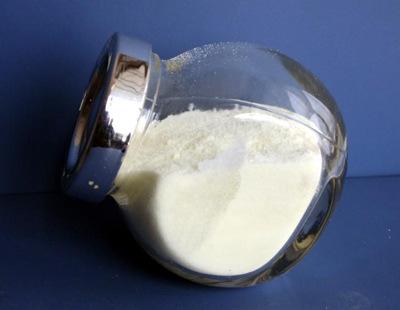Overview[1-4]
Anthranilic aldehyde is a commonly used organic synthesis intermediate, dye raw material and pharmaceutical raw material. It is an important raw material for the synthesis of quinoline anti-inflammatory and antiviral drugs. Anthranilic aldehyde is also an important pharmaceutical intermediate and fine substance for the synthesis of ambroxol. Chemical materials. Anthranilic aldehyde is an important intermediate and is widely used in fine chemicals and pharmaceutical fields. In medicine, it can further synthesize 2-amino-3,5-dibromobenzaldehyde, and it is a very important intermediate in the synthesis of ambroxol. Ambroxol was first developed and marketed by the German company Boehringer Ingelheim in 1984. It has now become a good new expectorant drug approved for use in many countries around the world, and is used in considerable amounts in current medicines.

Preparation[1-2]
Method 1
In the first step, add 30 mg of 5wt% Pd/C catalyst, 0.9 g of o-nitrobenzaldehyde, and 0.01 g of sodium acetate into a high-pressure reaction kettle containing a mixed solvent of 4 mL of water and 40 mL of ethanol.
In the second step, in the high-pressure reaction kettle, replace it with N2 three times, pass in H2 until the H2 partial pressure is 1.0MPa, the reaction temperature is 70°C, and the reaction time is 3 hours, so that o-nitrobenzaldehyde Converted to anthranilic aldehyde.
The third step is to cool the reaction kettle to room temperature, filter out the catalyst, and wash the separated catalyst with absolute ethanol. After washing, it is soaked in absolute ethanol and is ready for reuse; then the filtrate is extracted with dichloromethane 3 -4 times, combine the organic layers, dry with anhydrous sodium sulfate, filter, and evaporate the filtrate to remove methylene chloride to obtain the anthranilic aldehyde product.
According to high-performance gas chromatography analysis, the conversion rate of o-nitrobenzaldehyde is 95%, and the selectivity of o-aminobenzaldehyde is 100%.
Method 2
Put the sodium polysulfide solution (0.1mol) into a 100mL three-necked flask, add 50mL of anhydrous methanol and 5mmol of ionic liquid while stirring, heat to 50°C, and slowly add o-aminotolualdehyde (0.1mol) dropwise. Then reflux and stir for 2 hours, followed by HPLC tracking and detection. When the raw materials disappear, extract the reaction solution with dichloromethane, combine the organic phases, remove the organic solvent under reduced pressure, and obtain the product after vacuum drying, with a yield of 87.1% and a content of 96.5% (HPLC detection) .
Apply[5]
CN201110322540 discloses that o-nitrobenzaldehyde is used as the raw material and undergoes three unit reaction processes of reduction, bromination and reductive amination to obtain the target product. The specific process is to use o-nitrobenzaldehyde as the raw material and ethanol solution as the solvent. The reaction is carried out under the action of iron powder and a trace amount of concentrated hydrochloric acid to generate anthranilic aldehyde. The obtained anthranilic aldehyde is brominated into 3,5-dibromo-2-aminobenzaldehyde under the action of bromine and hydrogen peroxide, and the resulting 3, 5-Dibromo-2-aminobenzaldehyde reacts with trans-p-aminocyclohexanol in a methanol solvent for a period of time, and then sodium borohydride is added to react to generate ammonium bromide. Finally, the target product is extracted by rotary evaporation. The bromination process of the present invention can be carried out under mild reaction conditions, with short reaction time and mild reaction conditions; using 30% hydrogen peroxide and bromine to replace traditional bromide salts can improve the utilization rate of bromine and reduce the generation of organic by-products , reducing environmental pollution.
Main reference materials
[1] Synthesis method of CN201711377808.1 anthranilic aldehyde
[2]CN201510560414.4 An efficient and rapid method for synthesizing anthranilic aldehyde
[3]Compound Dictionary
[4] Concise Dictionary of Fine Chemicals
[5] CN201110322540.8 A simple and efficient synthesis method of ammonium bromine

 微信扫一扫打赏
微信扫一扫打赏

